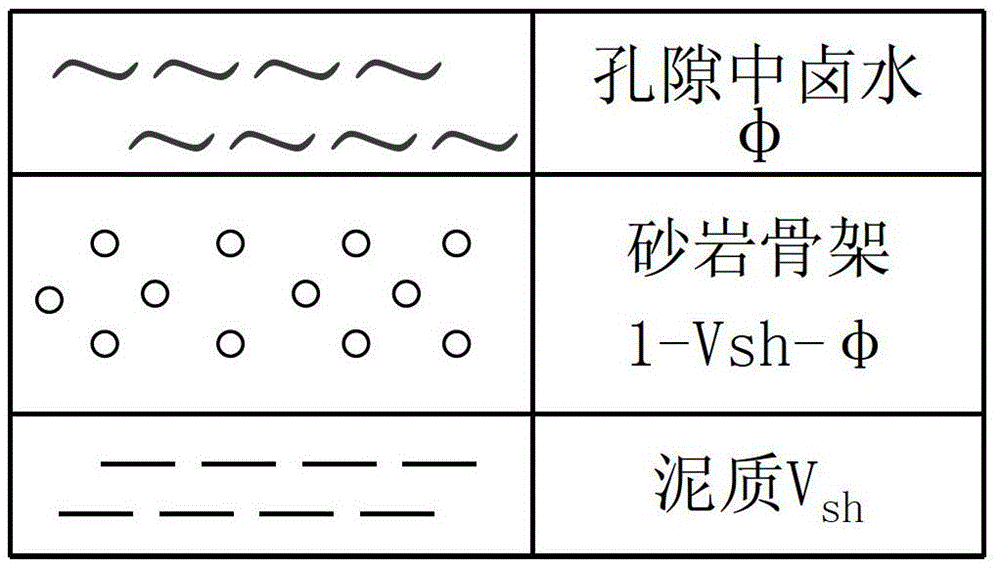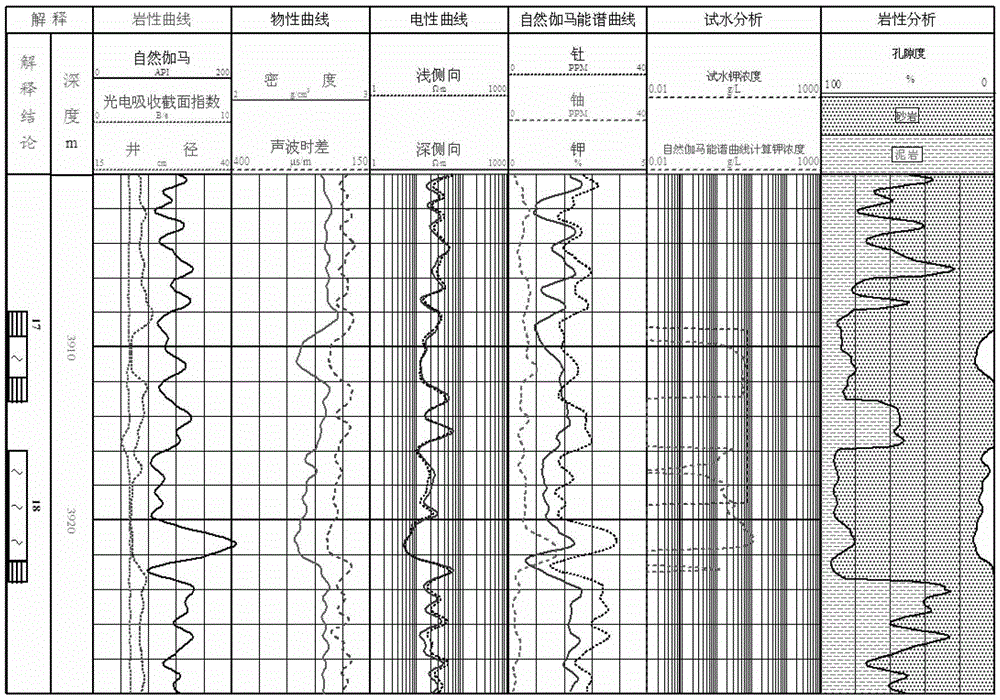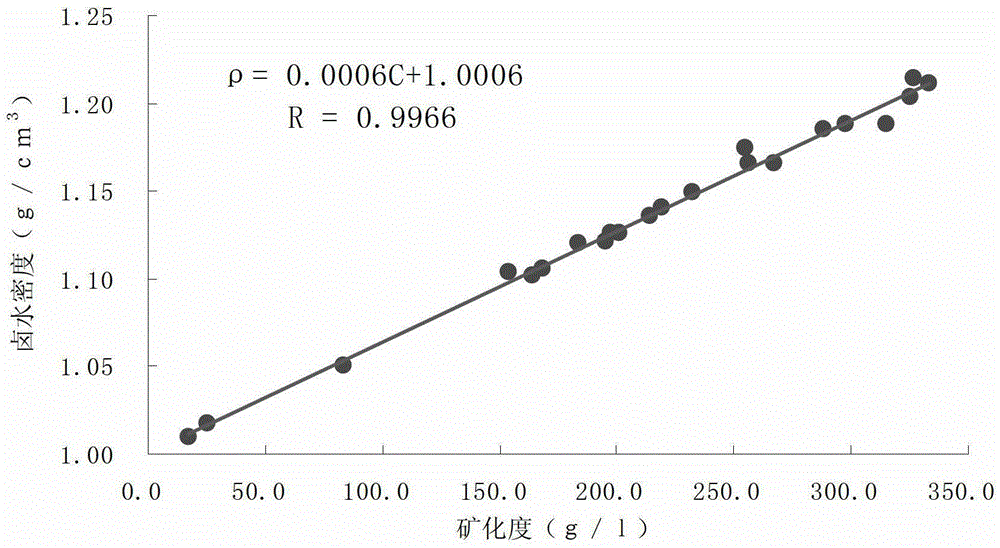A method for obtaining potassium ion content in sandstone brine layer from well logging data
A technology of logging data and potassium ions, which is applied in the field of obtaining potassium ion content in sandstone brine layers from natural gamma ray spectrum logging data
- Summary
- Abstract
- Description
- Claims
- Application Information
AI Technical Summary
Problems solved by technology
Method used
Image
Examples
Embodiment Construction
[0053] In order to better understand the present invention, the content of the present invention is further illustrated below in conjunction with the embodiments, but the content of the present invention is not limited to the following embodiments.
[0054] Wells 3909.4-3911.8m and 3916.0-3922.4m of Senior 1 are a sandstone brine layer (see attached figure 2 ), the time difference of the two layers is 213~227μs / m, and the density is 2.52~2.45g / cm 3 . Select the density to calculate the porosity, by calculating the shale content V sh The average is 0.15, the average porosity is 9.6% and 9.8% (see the table below), and the salinity calculated by resistivity is 253.22g / L; then the functional relationship between the brine salinity and density in this area is used (see the appendix). image 3 ) to calculate the density of the brine layer, and the density of the brine layer is 1.153g / cm 3 ; the potassium skeleton value K of the sandstone ma =1.05%, potassium measurement K for ...
PUM
| Property | Measurement | Unit |
|---|---|---|
| density | aaaaa | aaaaa |
Abstract
Description
Claims
Application Information
 Login to View More
Login to View More - R&D
- Intellectual Property
- Life Sciences
- Materials
- Tech Scout
- Unparalleled Data Quality
- Higher Quality Content
- 60% Fewer Hallucinations
Browse by: Latest US Patents, China's latest patents, Technical Efficacy Thesaurus, Application Domain, Technology Topic, Popular Technical Reports.
© 2025 PatSnap. All rights reserved.Legal|Privacy policy|Modern Slavery Act Transparency Statement|Sitemap|About US| Contact US: help@patsnap.com



